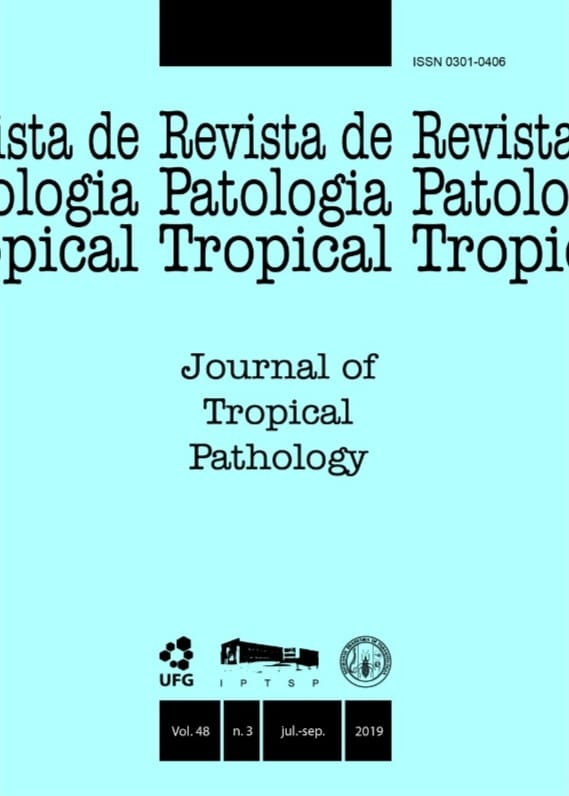THE SAND FLY SPECIES (DIPTERA: PSYCHODIDAE) IN AN URBAN ENVIRONMENT OF MATO GROSSO DO SUL, BRAZIL
DOI:
https://doi.org/10.5216/rpt.v48i3.61129Resumo
The purpose of this study was to search for Lutzomyia longipalpis and Lutzomyia cruzi in the urban area of the Água Clara Municipality, Mato Grosso do Sul State, Brazil. Two CDC traps were placed in the intradomicile and the peridomicile areas in four residences once a month, for three consecutive nights during 24 months. Were collected 11 species of sand flies totaling 3,418 specimens, 2,762 males and 656 females. Lu. longipalpis was the dominant species and there was no statistical difference between the peridomicile and intradomicile areas. Lu. cruzi was not found. The high capture rate for Lu. longipalpis in the urban area of Água Clara is cause for concern regarding necessary preventive measures to avoid future cases of visceral leishmaniasis.
KEY WORDS: Leishmaniasis; Lutzomyia longipalpis; Phlebotominae; calazar.
Downloads
Downloads
Publicado
Como Citar
Edição
Seção
Licença
The manuscript submission must be accompanied by a letter signed by all authors stating their full name and email address, confirming that the manuscript or part of it has not been published or is under consideration for publication elsewhere, and agreeing to transfer copyright in all media and formats for Journal of Tropical Pathology.

